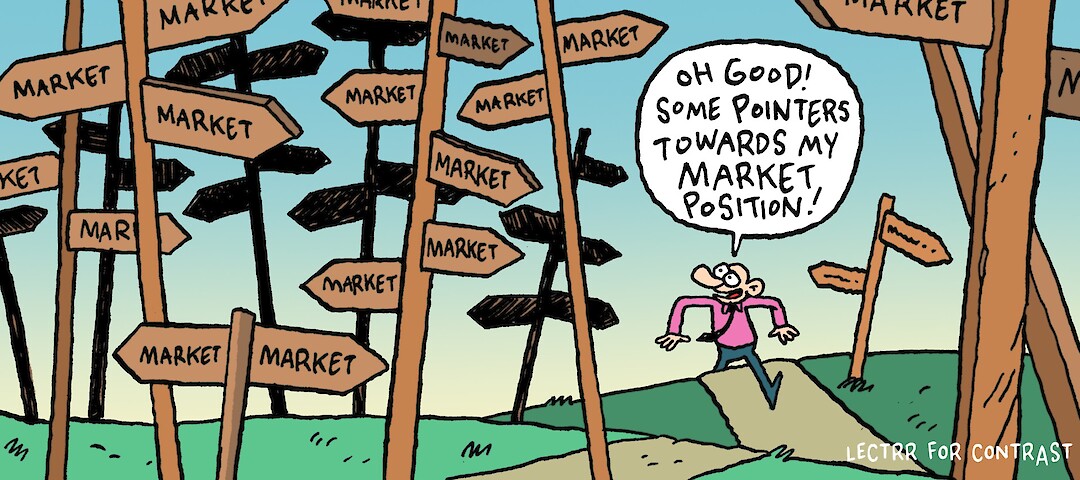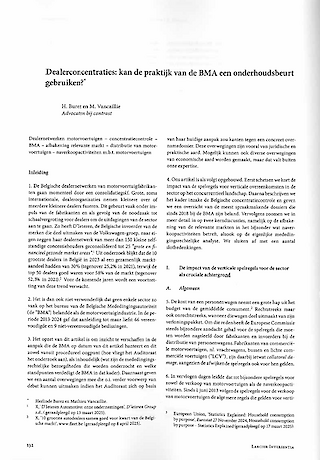In the Picture

Navigating the relevant market
March 2024Market shares are a common starting point for assessing competition in a market. If you want to enter into an agreement with a competitor, your legal department will probably first and foremost ask what the parties' market share is. Market shares also determine the application of legal instruments or procedures. If you want to prohibit your distributors from selling through online marketplaces, whether you benefit from a safe harbour under competition law to do so will depend on your market share. If you want to make an acquisition that has to be approved by the competition authorities, its notification will be simplified if you do not exceed certain market share thresholds.
Market shares are measured in the relevant market, and for the first time in more than 25 years, the European Commission has published a new notice on the definition of the relevant market.
The previous notice dated back to 1997. The new notice is not a radical change of approach. However, it does consolidate decision practice and case law and addresses the impact of the digitisation of the economy. The notice has become considerably longer and now covers 35 pages instead of 9.
What do you need to know?
The relevant market consists of a relevant product market and a relevant geographic market. As in the past, the delineation of both is done primarily by determining the demand substitution for the products concerned. If customers easily switch to readily available alternative products, then a strong demand substitution exists between those products, and they belong to the same product market.
The focus is still on reactions to price increases, that is, the question of which products customers would switch to if the price of the products in question increases by 5-10%. Those substitute products belong to the same relevant product market. More than before, the new communication also considers non-price parameters, such as the degree of innovation and the quality and availability of the products, as well as expected changes in the market. For example, in sectors where research & development ('R&D') is very important (for example, the pharmaceutical sector), the Commission can take into account potential outcomes of R&D in the market definition. Pipeline products are not yet available, but the state of the R&D process can reveal whether they belong to an existing product market or will constitute a separate new market.
The notice contains more guidance than before on defining the geographic market, which ranges from local, national, through EEA-wide to global. In the case of indications that markets are wider than national but narrower than global, the working assumption is an EEA-wide assessment.
The notice maintains the existing practice of the Commission (and of national competition authorities) of leaving open the precise definition of the relevant market if the outcome of the competitive assessment is identical in different plausible delineations. This often amounts to the competition authority considering whether the competitive assessment is positive on the narrowest possible relevant product and geographic market. If so, it will often also be positive in a wider market where market shares will be lower, and the authority often leaves the actual market definition open.
The notice addresses the approach to market definition in a range of specific circumstances, including in cases of significant product differentiation (can differentiated products belong to the same product market?), discrimination between customers (are there separate markets for each group of customers?), multi-sided platforms (like LinkedIn or Uber) and aftermarkets and bundles.
Regarding the latter, the question is, for example, whether printers and ink cartridges, or watches and their spare parts, belong to one and the same market (a system market) or if there is a separate market for the primary and secondary products (dual markets) or for the primary products and each of the secondary products of a particular brand (multiple markets). The distinction has great practical importance. Indeed, in the latter case, the manufacturer is more likely to be dominant in the brand-specific aftermarket. The notice sets out the parameters that the Commission takes into account when defining aftermarkets, such as whether customers take into account the whole-life costs when purchasing the primary product.
Finally, the notice devotes considerable attention to the evidence the Commission can use to delineate relevant markets. This includes not only evidence on product characteristics and prices, but also on intended use and evidence of past substitution. Indeed, product characteristics may be different (for example, rail and air transport), yet evidence of past substitution may show that both belong to the same product market (for example, this is the case for rail and air transport on the Brussels-London route). Also relevant are the parties' own views (especially in internal documents prepared before the start of the investigation) and views of other market participants (customers, suppliers, competitors, public authorities, professional federations, etc.).
Concretely.
- Market shares often determine the outcome of the competitive assessment of agreements between competitors, and also of mergers between firms. They are measured in the relevant market, which consists of a relevant product market and a relevant geographic market.
- A predictable methodology for defining the relevant market is crucial: it allows companies to assess their own market position and thus have greater certainty that their commercial behaviour complies with competition law.
- The Commission has published a comprehensive new notice on the definition of the relevant market for the first time in more than 25 years. The new notice guides market definition into the 21e century. It pays close attention to the digitalisation of the economy and includes guidance on market definition in specific circumstances such as multi-sided platforms and digital ecosystems.
- The notice confirms that demand substitution remains central to defining the relevant market: products that customers consider to be interchangeable belong to the same product market. The reason for substitution can be the price of the products, but also other characteristics such as quality, innovation and availability.
- The new notice confirms the working method that competition authorities start from the narrowest possible market when assessing competition. If no problems arise in that market, the actual market definition is left open. Otherwise, evidence is gathered in accordance with the notice. Here, evidence has a higher probative value if it pre-dates the investigation or merger.
Want to know more?
- The revised market definition notice can be found here.
Please consult our website or contact one of our team members if you have questions or require more information:













